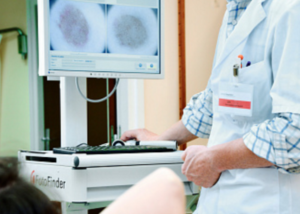Weight Training for Plus Size Women Over 50

Training with weights will provide remarkable results for women over 50 who are plus sized.
Overweight women 50+ can just as easily pick up a dumbbell or barbell as thinner women in this age group.
There are many benefits from strength training for plus size women over 50. Every woman needs to lift weights — ESPECIALLY older ones.
“Weight training” is the PC term that refers to, quite simply, lifting weights. Call it what you wish, but it’s the same thing: moving against resistance.
This can be done with any of the following:
- Dumbbell and barbell
- Kettlebell
- Resistance machine
- Heavy medicine ball
- Tension band/tubing
- Suspension straps
- Body weight only (e.g., pushup)
Though plus size women over 50 years of age will struggle with pushups if they’re not trained…realize this: You do NOT have to try pushups.
However, body weight squats are a superb start that you can actually do on the very first try. The issue is how many you can do in a row. Aim for 8, then 12, then 15, then 20.
Strength Training Benefits for Overweight Women 50 Years or Older
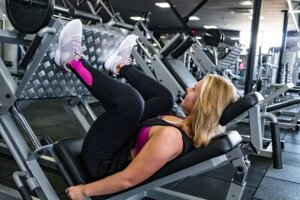
Leg press. Shutterstock/Aleksey Boyko
Though a woman should begin lifting weights much earlier in life, it is never too late to reap the great rewards of exercising against resistance.
Though many women today continue to be averse to the idea of picking up a dumbbell, barbell or even pushing against a stack of metal plates on a sit-down machine, it is women, more so than men, who really need to push and pull against resistance.
This is because women are at a much greater risk of suffering from brittle bone disease (osteoporosis) than are men.
The hormone estrogen has a protective effect against bone loss.
The level of estrogen in a woman’s body drops significantly after menopause, and this heightens her individual risk for losing bone mass.
One way to preserve bone mass is to lift weights. Strength training makes muscles pull at bones.
When muscles pull against bones, this forces the bones to adapt to this stimulus. They adapt by increasing in density (i.e., mass).
Hence, greater bone mass results from weight workouts. The more bone mass a woman has, the less likely she’ll ever suffer a bone fracture.
A second benefit is that strength training will encourage fat loss.
Beginning at around age 30, a woman who has not been weight training begins to lose muscle mass, to the tune of about 5 pounds of muscle per decade.
By the time she’s 50, she’s lost up to 10 pounds of muscle.
Resistance exercise can replace this loss of valuable tissue. Loss of muscle is directly correlated to gain in fat.
In fact, it outright causes fat gain, because muscle requires a lot of energy (calories) just to exist.
If a woman loses muscle, incoming calories get stored as fat because there’s no longer enough muscle mass to use up all those incoming calories.
Does weight training for plus size women over 50 differ from that for trainees much younger?
No, not at all. The same rules apply:
• Warm up
• Practice good form at all times.
• Do mostly compound routines. Compound exercises work several muscle groups at once (examples follow).
• Don’t work the same muscle groups two days in a row.
• Separate weight days from cardio days.
• Lift moderate to heavy weights (whatever feels “moderate” or “heavy” to the trainee).
• Sessions should last 30-60 minutes.
• After warming up, you should do sets with enough resistance to make 8-15 repetitions very challenging.
If the trainee wishes to push even harder (by either using more resistance or by pushing through to the last repetition that’s absolutely possible), that’s great, too.
Some people have more of an “iron will” than others and enjoy pushing to exhaustion. One should not push to exhaustion on every set, however.
• Beginners should spend several weeks using light weights and working at an effort of moderate intensity before advancing to higher intensity.
• Practice progressive overload. This means gradually increase the resistance over time as the muscles and joints get stronger.
• Exhale on the exertion (the push or pull) and deeply inhale on the release. Never hold the breath during a routine.
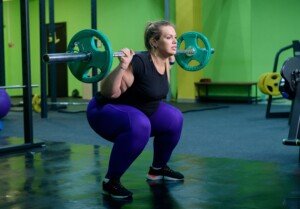
Squat. Shutterstock/Reshetnikov_art
Best compound exercises for building bone, losing fat, toning and strengthening muscles and becoming as physically fit as possible:
• Deadlift (barbell or dumbbell). Works middle and upper back, shoulders, arms, legs, buttocks and core (lower back and abs).
• Squat (barbell, dumbbell, kettlebell). Works legs, buttocks and core; works shoulders when dumbbells and kettlebells are used.
• Leg press. Works buttocks and legs.
• Lat pull-down/seated row/barbell row. Works back and arms.
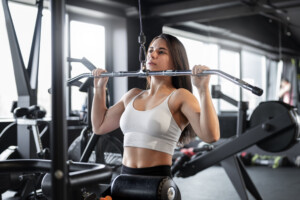
• Bench press/dumbbell press/pushup. Works chest, shoulders and arms.
• Shoulder barbell/dumbbell press. Works shoulders and arms.
• Clean & press. Works middle and upper back, legs, buttocks, core, shoulders and arms.
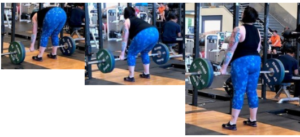
Best isolation exercises. Isolation routines utilize one main muscle group and require action from only one joint. These burn much less fat than do compound exercises.
- Biceps curls with barbell or dumbbell
- Triceps push-downs with a rope and pulley system
- Chest flyes with a “pec deck” machine
- Shoulder side and front raises with dumbbells
- Leg extensions
- Hamstring curls
Being overweight is sometimes used as an excuse to avoid lifting weights.
However, it’s time to see being full-figured as a reason to embrace working out with weights.
 Lorra Garrick is a former personal trainer certified through the American Council on Exercise. At Bally Total Fitness she trained women and men of all ages for fat loss, muscle building, fitness and improved health.
Lorra Garrick is a former personal trainer certified through the American Council on Exercise. At Bally Total Fitness she trained women and men of all ages for fat loss, muscle building, fitness and improved health.
.
Top image: Shutterstock/ T.Den_Team
Fight Aging: Build Your Thigh Muscles
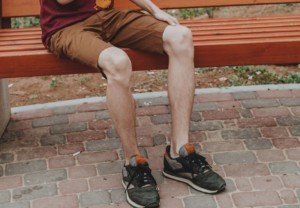
Building thigh muscles will dramatically fight aging.
There is an inverse relationship between muscle mass and aging, in that the more muscle mass you have, the slower you will age.
The more muscle in your body, the faster your resting metabolic rate.
This means less excess fat in your body, which translates to much lower risk of many savage diseases, and that’s certainly a great way to fight aging.
To fight aging, you can take all the herbs and eat all the roots and take all the supplements you want, but without good solid muscle tissue in your thighs, your fight against aging will be limited.
Building lean muscle in the thighs will help fight off age-related disease.
One such disease is heart disease, and one of the risk factors for that is excess fat in the belly.
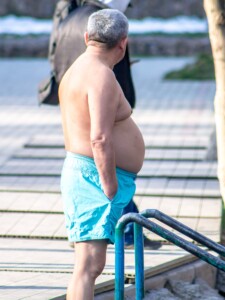
Shutterstock/Vladimir Konstantinov
Women and men both are prone to the ever-increasing belly as they get older, and this brings with it an increasing risk of serious heart disease.
Excess fat also increases risk of some cancers, and impedes mobility as time goes on. There’s no way around it: Excess fat has no virtues.
Building thighs will fight aging in that the muscles in your upper legs and buttocks are the largest in the body.
They are central headquarters for your body’s metabolic furnace.
Have you ever wondered why it is that men who have these super-big bellies often have spindly chicken legs?
And as they age, their belly gets fatter and bigger, while their legs get thinner?
How It All Works
The younger adult body naturally has more muscle, including in the legs and butt. This muscle mass requires much energy just to breathe.
- A pound of muscle burns 30-50 calories per day.
- If this young person does not perform weight-bearing exercise for the legs (and upper body), then beginning at around age 30, he or she will lose muscle mass, at a rate of about 5 pounds per decade.
Loss of this lean tissue means that the person’s food intake, instead of being burned off by what was once a lot of muscle, will now be stored as fat: a nasty sign of aging.
- The muscle that used to burn the food is no longer there.
- So the food goes straight to the belly.
- As years go by, more muscle mass is lost in the legs.
- More food ends up getting stored as fat.
- Losing muscle mass means an ever-slowing resting metabolism.
- The result? A fat belly and stick legs.
Women more often have heavy legs to go with a fat belly because of hormonal differences and body-composition differences in the genders, but I’m sure you’ve seen plenty of women with fat stomachs but scrawny arms and legs.
By building and maintaining thigh muscle mass, you can fight aging by keeping extra fat at bay, which therefore will help keep killer diseases at bay.
Building thigh mass fights aging by making you look a lot younger than you would with that fat belly and chicken legs.
Building thigh mass doesn’t mean you’ll get huge legs like a bodybuilder.
Below are great exercises for building thigh muscle: strong, lean muscle mass and the strong knee joints that come with this development.
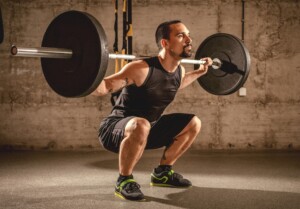
Back Squat. Shutterstock/MilanMarkovic78
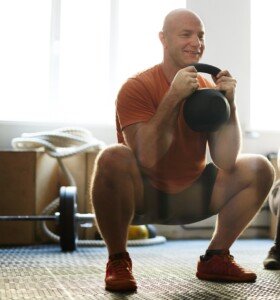
Kettlebell Squat. Shutterstock/Pressmaster
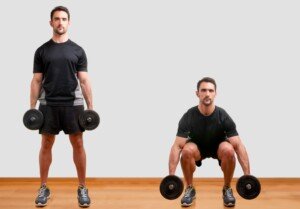
Dumbbell Squat. Shutterstock/ruigsantos
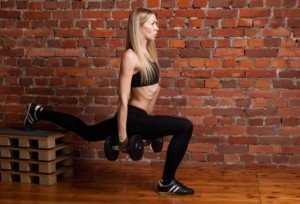
Dumbbell Split Squat. Shutterstock/Artsplav
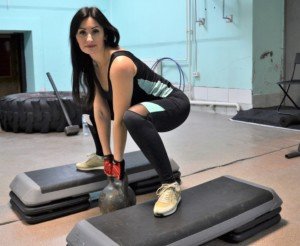
Miscellaneous Squat
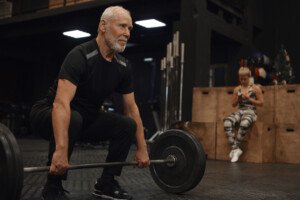
Deadlift. Shutterstock/Anatoliy Karlyuk
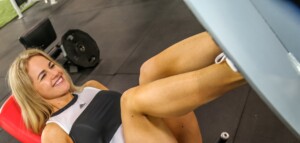
Leg press. Pexels/Rich-ortiz
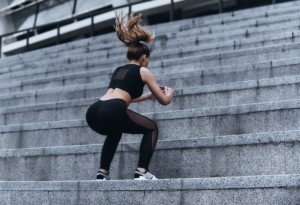
Power Jumps. Shutterstock/G-Stock Studio
More information: deadlift, leg press and plyometrics.
 Lorra Garrick is a former personal trainer certified through the American Council on Exercise. At Bally Total Fitness she trained women and men of all ages for fat loss, muscle building, fitness and improved health.
Lorra Garrick is a former personal trainer certified through the American Council on Exercise. At Bally Total Fitness she trained women and men of all ages for fat loss, muscle building, fitness and improved health.
Why You Need More than Mints to Have Fresh Breath for Valentine’s Day

4 Tips Straight from the Dentist’s Mouth
The most important part of planning the perfect Valentine’s Day date is planning on having fresh breath.
This make-it-or-break-it step cannot be crammed in at the last minute, and believe it or not, using mints in the moment is simply not enough.
There are four tips that every Valentine’s Day dater should know.
Whether it’s a first date or a 30th anniversary, everyone appreciates fresh breath.
1. Clean Your Tongue
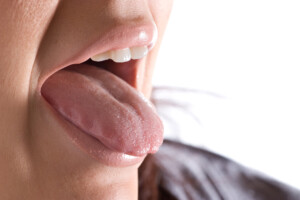
Shutterstock/ARENA Creative
The surface of the tongue is similar to that of a fine brush. The natural surface of the tongue can catch food debris and also bacteria.
This coating on the tongue can also catch coffee and other foul smelling irritants that can increase the mal-odor.
By removing this with a tongue scraper, one can actually remove the foul smelling debris and bacteria and prevent the odor from returning.
2. Watch What’s on Your Fork

Another way to decrease bad breath on a date is to watch what you eat.
Foods like garlic and onions can cause bad breath issues, as well as certain fish.
By eliminating these foods from a date night meal, you’re going to greatly cut down on the risk of bad breath.
3. Choosing the Right Mint

A good date may end in a goodnight kiss, and daters may want to have an extra dose of freshness before that happens.
But it is important to choose the right type of chewing gum or mints.
These products that contain sugar should definitely be avoided, as they can cause dental cavities.
Sugar free or xylitol containing mints are a great choice in situations like this.
4. See the Dentist
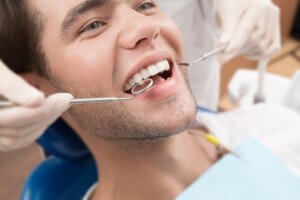
Shutterstock/Mintybear
If it has been more than six months since the last professional dental cleaning, it is possible that there is odor-harboring buildup stuck on the teeth or below the gum lines.
No one but your dental professional can remove this buildup, so make sure to get a dental appointment before the big event.
Dr. Blalock is the owner of Cardinal Dental in St. Peters, MO. She is also a writer and her work has appeared in dental magazines, blogs and print media. She is available for media appearances and is known for her positive attitude and approachability.
.
Top image: Shutterstock/Aaron Amat
Avoiding an ER Visit Due to CT Scan Radiation Fear?
Research shows that radiation from CT scans isn’t as bad as once thought.
You should not hesitate to visit the ER because you think a CT scan will be ordered.
What may be particularly concerning to some individuals is a CT scan of the head after they hit their head in an accident.
“The risk of death related to brain hemorrhage is far higher than the small risk related to a CT scan,” says Resham Mendi, MD, a renowned expert in the field of medical imaging, and the medical director of Bright Light Medical Imaging.
“The ER doctor will assess the patient first,” continues Dr. Mendi. “If they do not feel that there is a significant risk of brain bleed, they will not do the CT.
“If they think there is a risk, the CT is well worth it.
“Also, the brain is a low-radiosensitivity organ, meaning, that it is not very susceptible to the bad effects of radiation.”
In short, if you got hit in the head really hard and are experiencing symptoms (worsening headache, nausea, increased drowsiness, problems with vision), you’d better get to the emergency room ASAP and put your fear of brain cancer from a CT scan under the rug.
Reassuring Research
A report in American Journal of Clinical Oncology has some interesting findings.
The risk of cancer from CT scans and X-rays is estimated by a model called the linear no-threshold (LNT).
These risk estimates, however, “have never been conclusively demonstrated by empirical evidence,” notes James Welsh, MD, in the paper.
Dr. Welsh’s research shows that the LNT model assumes there does not exist a safe dose of radiation.
The LNT model is based on studies of many decades ago on fruit flies, when researchers believed there was no safe level of radiation. Their experiments did not use low enough doses, believes Dr. Welsh.
That’s not to say that radiation isn’t as dangerous at high enough levels.
But Dr. Welsh’s investigation considered the radiation only from CT scans and X-rays, which occur at lower doses than those released from, say, a nuclear plant accident.
Dr. Welsh says that skeptics about CT scan radiation should vigorously challenge danger claims, as they serve “to alarm and perhaps harm, rather than educate,” he says in the report. He wants the LNT model to be abandoned.
If a CT scan is ordered for your or your child’s head injury, or for some other symptom such as chest pain, ask how it can help guide your diagnosis.
Ask your physician what the worst case scenario might be if you refuse the CT scan (or X-ray).
Dr. Mendi has published several articles in radiology journals and has expertise in MRI, women’s imaging, musculoskeletal, neurological and body imaging.
 Lorra Garrick has been covering medical, fitness and cybersecurity topics for many years, having written thousands of articles for print magazines and websites, including as a ghostwriter. She’s also a former ACE-certified personal trainer.
Lorra Garrick has been covering medical, fitness and cybersecurity topics for many years, having written thousands of articles for print magazines and websites, including as a ghostwriter. She’s also a former ACE-certified personal trainer.
—
Source: sciencedaily.com/releases/2016/02/160203134456.htm
Faintness Post-Exercise: Causes, Solutions by Doctor
The feeling or sensation of being just about to pass out during your workout can come in the form of dizziness or lightheadedness.
“Dizziness and/or feeling lightheaded during exercise can be related to several issues,” says Teresa Caulin-Glaser, MD, a cardiologist and senior vice president with Service Lines, OhioHealth.
“The most common two causes are dehydration and low glucose (blood sugar) levels.
“Oftentimes individuals exercise on an empty stomach, and the glucose levels fall.
“This results in lightheadedness and sometimes confusion. Having a small snack can eliminate this problem.”
Gym Sessions
My underweight personal-training clients almost passed out during exercise because they probably hardly ate anything that entire day; that would have been very easy to believe, given their body weight status; thin and malnourished is NOT healthy.
Dr. Caulin-Glaser continues: “Dehydration is commonly seen in individuals exercising. Drinking fluids when you are exercising is important for a few reasons.
“There will be insensible loss of fluids from the body with exercising due to sweating.
“Also, blood vessels dilate with exercise and as a result blood pressure drops.
“The drop in blood pressure can last for several hours after exercise. The result can be lightheadedness.”
Additionally, feeling like you’re going to pass out while exercising is also a function of how physically fit you are in the first place.
My clients were under-exercised; not used to good hard workouts.
People in top physical condition can almost always hammer away at a workout session on an empty stomach without feeling ready to pass out.
Dr. Caulin-Glaser adds: “It is important to know that there can be cardiovascular reasons for lightheadedness and these need to be evaluated.
“The problems may be related to abnormal heart rhythms and/or structural heart problems.
“It is always important to speak to your physician about any new symptoms, I recommend regular evaluations with your primary care physician, especially if you are initiating a new vigorous exercise program.
“Your doctor may refer you for a cardiac evaluation based on your history and exam.”
If you’ve been cleared for any medical problems, but are still feeling like you’re on the verge of passing out during exercise, re-evaluate your eating and hydration habits.

Dr. Caulin-Glaser is an experienced physician, teacher and researcher in the specialty of cardiovascular disease, and formerly the system vice president for Heart & Vascular Services at OhioHealth.
 Lorra Garrick has been covering medical, fitness and cybersecurity topics for many years, having written thousands of articles for print magazines and websites, including as a ghostwriter. She’s also a former ACE-certified personal trainer.
Lorra Garrick has been covering medical, fitness and cybersecurity topics for many years, having written thousands of articles for print magazines and websites, including as a ghostwriter. She’s also a former ACE-certified personal trainer.
.
Top image: Depositphotos.com
Feel Dizzy After Exercise? Doctor Gives Causes and Solutions

A doctor gives an explanation for feeling dizzy after exercise and how to manage this problem.
I’ve had personal training clients complain of dizziness during exercise.
These were people who weren’t, let’s say, in the best of condition, but otherwise healthy.
But at some point during the exercise, they got dizzy. This didn’t happen often, though.
“Exercise can trigger dizziness for number of reasons, says Jacob Teitelbaum, MD, medical director of the Fibromyalgia and Fatigue Centers nationally, and author of “Beat Sugar Addiction Now!”
“These include, most often, dehydration and salt depletion.”
A person who’s out of shape or not accustomed to intense exercise may get dizzy simply because their body is not used to the training stimulus of rigorous exercise. Often, these clients did not adequately hydrate themselves, and/or ate poorly in the hours prior to the workout, if at all.
I’d work these clients harder than what they were used to, and if they did not have adequate nourishment all day long preceding the workout, it was no surprise that they’d get dizzy at some point during the exercise session.
Another possible cause of dizziness during exercise is the motion during the exercise, such as doing pivoting movements in a step class – these involve half-turns and can cause some head spinning.
Some group fitness classes involve 360 degree turns, and these will cause an inexperienced person’s head to spin.
Another potential cause of dizziness from working out is doing something that requires balancing, like walking on a treadmill without holding onto the rails. I’ve had people tell me that if they let go, they’ll get dizzy.
The cure for this is to let go but walk very slowly, so that the body doesn’t readily sense anything different.
As the body adjusts, you increase the speed while still keeping your hands at your sides and swinging naturally.
“Less common and more worrisome causes include abnormal heart rhythms and angina,” says Dr. Teitelbaum. Abnormal heart rhythms (arrhythmias) can also cause fatigue and fainting.
Angina is diminished oxygen flow to the heart due to narrowing of coronary arteries.
Other symptoms of angina are shortness of breath and chest pain brought on by only light exercise (stable angina), or spontaneously during rest (unstable angina).
“Problems missed most often by physicians includes autonomic dysfunction such as neurally mediated hypotension (NMH) or POTS (postural orthostatic tachycardia syndrome).
These latter two are often associated with chronic fatigue syndrome.”
Neurally mediated hypotension involves low blood pressure, and POTS is when a change in body position causes a drop in blood pressure, and fast pulse. These not only may cause dizziness, but passing out.
Other possible causes of dizziness while hitting the gym: Meniere’s disease, pregnancy, PMS and side effects of medications.
If you get dizzy during physical activity and it isn’t remedied with adequate hydration and food intake, as well as avoiding specific motions that trigger dizziness like spinning around in a hip hop class or doing headstands, an evaluation by a doctor would be a smart idea.
Dr. Teitelbaum is a board certified internist and nationally known expert in the fields of fibromyalgia, chronic fatigue syndrome, sleep and pain.
is a board certified internist and nationally known expert in the fields of fibromyalgia, chronic fatigue syndrome, sleep and pain.
 Lorra Garrick has been covering medical, fitness and cybersecurity topics for many years, having written thousands of articles for print magazines and websites, including as a ghostwriter. She’s also a former ACE-certified personal trainer.
Lorra Garrick has been covering medical, fitness and cybersecurity topics for many years, having written thousands of articles for print magazines and websites, including as a ghostwriter. She’s also a former ACE-certified personal trainer.
.
Top image: Shutterstock/iambasic_Studio
Are You Stronger than Your Husband in the Weight Room?
For women who feel awkward because they’re stronger than their husbands, I’ve decided to write this article.
I was inspired by a thread on a fitness site. I could not believe how many women (who’ve been working out hard) are struggling with the fact that they’re stronger than their husbands.
First, a little about me: I’m a former personal trainer and have been lifting weights hard and heavy since my teen years.
I recommend that women try to see things from their husband’s perspective.
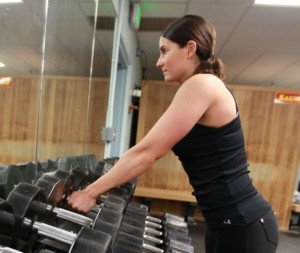
Imagine, ladies, for a moment that you’re the husband. And your wife is you.
Wouldn’t it please you to know that your wife — stronger than the average man off the streets — could probably fight off a rapist?
I noted in the thread that the negative feelings that the women expressed seemed to be coming from inside their heads, not from their husbands.
The mindset was to the effect of: “I don’t feel right being stronger than my husband,” or, “I’m afraid he’ll find it a turn-off.”
A turn-off? Really! Think of how much better your hub feels knowing that your physical strength puts you in a better position to fight off a man who wants to rape you. I’m serious.
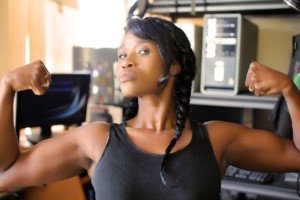
Certainly there are times when you’re out and about alone, and your husband can’t help but worry for your safety.
A woman who trains hard with weights is stronger than the average man off the streets (but certainly not the average man in the free weight area in a gym).
So that man on the street, in that dark parking lot, or some smuck at the office, who begins behaving badly to that strongly-weight-trained woman and crosses the line — will get a real pleasant surprise!
Your husband will not feel more secure if your ability to defend yourself has been compromised by the absence of strength-trained muscles and bones.
No matter how big some thug out there is, no matter how violent he is, no matter what kind of weapon he may have, and no matter how much a woman weighs…it’s just a plain fact that if she is strongly trained from weight workouts — this puts her in a far greater position to fight off an assailant — or survive a completed attack — when compared to her non-weight-trained self.
Don’t hang your head with despondence that you’re stronger than your husband.
Don’t hesitate to offer him some strength training advice, either, when he’s struggling with a 165 pound bench press.
In fact, a woman who has figured out a way to bench press 185 pounds certainly knows a few secrets that a male — for whom benching 185 comes more naturally—isn’t aware of.

Freepik.com, senivpetro
When I was a personal trainer at a large health club, a male patron came up to me one day and told me how impressed he was with the way I trained my female clients (he apparently had never seen me with my male clients).
He then said, “Gee, you can even train the MEN!”
That was an interesting comment, because a man who’s struggling to build muscle and strength would learn what REALLY works if he were trained by a very strong woman — because she’s had to work with one-tenth the testosterone level as the average man.
If I were a man and saw a woman doing textbook-perfect parallel bar dips with a 35 pound plate hanging from her waist, I’d want HER to train me, because proportionately, she’s far stronger than many male trainers.
Bottom line: Your husband probably relishes the fact that you’re stronger than him, and if you have bigger muscles — well, he knows you’re that much less likely to be overtaken on the streets.
 Lorra Garrick is a former personal trainer certified through the American Council on Exercise. At Bally Total Fitness she trained women and men of all ages for fat loss, muscle building, fitness and improved health.
Lorra Garrick is a former personal trainer certified through the American Council on Exercise. At Bally Total Fitness she trained women and men of all ages for fat loss, muscle building, fitness and improved health.
How to Keep Steamed Broccoli, Carrots Hot While Eating Them

Here is a very simple way to keep steamed broccoli, carrots, etc., hot WHILE you eat them.
And I mean very hot — so that you’re never stiffed with vegetables that have become unpleasant due to “getting cold.”
Even a lukewarm piece of broccoli or cauliflower is no longer appetizing.
After the vegetables, be they broccoli, carrots, cauliflower, zucchini or what-have-you, are steamed to your liking, carefully dump them (a spoon works best) into a thick tall drinking glass.
Depending on how much you have, you may need a big drinking glass. I eat a lot of broccoli and carrots in one sitting, so I use a 20 ounce drinking glass.
The amount I eat fills to near the top (because I initially fill this glass with the raw vegetables to get the right amount, then dump them in the strainer and steam them).
You now have the steamed vegetables inside the glass. You can now start eating out of the glass, and the shape of the glass will keep the heat extremely well contained. You will be amazed!
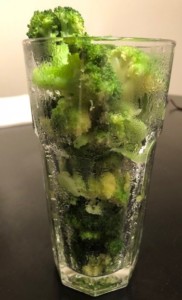
In fact, sometimes by the time I’m midway down the glass, I must still be careful about not burning my tongue.
If the vegetables are too hot, no problem: Just let them sit in the glass for several minutes.
The glass does such a good job of keeping the vegetables hot that you will see the steam pouring out.
You’ll need a full-length fork, of course, to reach the bottom of the glass.
Keeping Vegetables Hot While Eating Them
This simple trick works magically. You no longer have to hurry through eating your steamed broccoli and carrots or other vegetables.
They get cold very quickly just sitting on a plate. Containing them in a glass eliminates having to use an electrical hotplate or other inconvenient ways of keeping steamed vegetables hot.
Think outside the box. A drinking glass makes a fantastic “hot plate” for steamed vegetables that will keep them hot!
 Lorra Garrick has been covering medical, fitness and cybersecurity topics for many years, having written thousands of articles for print magazines and websites, including as a ghostwriter. She’s also a former ACE-certified personal trainer.
Lorra Garrick has been covering medical, fitness and cybersecurity topics for many years, having written thousands of articles for print magazines and websites, including as a ghostwriter. She’s also a former ACE-certified personal trainer.
Can Deadlifts & Farmer’s Walk Cause Height Loss?
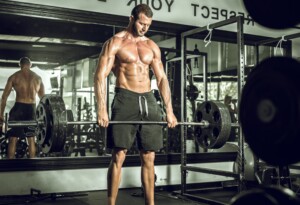
A spine specialist weighs in on whether or not deadlifts and farmer walks can make you shorter.
It seems logical: You have 315 pounds pulling down on you.
Therefore, over time, this will cause the vertebral discs of the spinal column to become closer together, making you shorter—a shorter spine due to compression from all that deadlifting.
Farmer’s walks are similar in that a lot of weight is pulling down on you.
And even though the amount of weight in the farmer’s walk is a lot less than what that same person deadlifts, the farmer’s walk may also last a lot longer than any given deadlift set—up to a few minutes.
Can the Deadlift or Farmer’s Walk Cause Height Loss?
“There’s no current research showing heavy exercises such as the farmer’s walk or deadlifts decreases the overall height of a full-grown adult,” begins Dr. Jeff Langmaid, DC, founder/owner of The Evidence Based Chiropractor, LLC, in Tampa, FLA, a research-based marketing and practice growth company that serves thousands of chiropractors across the world.
“Additionally, no research has conclusively determined that exercise decreases overall height. We naturally get shorter over time, as discs dehydrate as we age.”
Men in their 20s and 30s have been known to swear that they’ve shrunk in height (one to one and a half inches) since starting a deadlift program (even squats, too).
On the other hand, some men will assert that they’ve gained an inch in height since starting these exercises.
The height gain is simply the reversal of bad posture, which can be improved with the deadlift and squat, as these exercises strengthen the entire posterior chain of musculature.
But height loss?
Dr. Langmaid continues, “Each and every day, we stand upright against gravity, and each day we lose overall height. Any exercises that load the spine — or place increased load on the spine — have the potential to advance the decrease of height.
“The good news is that each night when we go to sleep, those discs regain a majority of that height, so we start each day fresh and new.”
What about decompression exercises?
“Nothing shows that decompression after completing deadlift exercises will immediately restore height, but, certainly, decompression can be a good thing to do if one is performing exercises that are consistently loading one’s spine.
“Decompression, whether on a fraction table or inversion table, provides axial distraction of the disc space and stretches the disc.
“Doing so can increase amount of fluid hydration and nutrients that transfer across the disc space and decrease intradiscal pressure.”
Perhaps after every, or some, deadlift sets, you should immediately do a dead hang on a chinning bar. The squat cage should actually have handles for chinning.
If you must jump up to reach them, then use a stool, since you may not want to jump right after a nasty deadlift set.
If the Smith machine is nearby, you can set the bar at its highest point and dead hang from there (bend the legs).
Another option is to do several sets of dead hangs at the very end of your workout.
 Jeff Langmaid, DC
Jeff Langmaid, DC
 Lorra Garrick has been covering medical, fitness and cybersecurity topics for many years, having written thousands of articles for print magazines and websites, including as a ghostwriter. She’s also a former ACE-certified personal trainer.
Lorra Garrick has been covering medical, fitness and cybersecurity topics for many years, having written thousands of articles for print magazines and websites, including as a ghostwriter. She’s also a former ACE-certified personal trainer.
.
Top image: Shutterstock/Ajan Alen
Can’t Stop Anxiety over Your Moles?

If you suffer from mole anxiety and fear of melanoma, you need to read this helpful information for the “molechondriac.”
- Do you find yourself constantly checking your moles for changes? Imagining changes?
- Worrying incessantly about melanoma?
You should make an appointment with a dermatologist and request removal and biopsy of any moles that worry you. It’s about trusting your gut.
“Melanoma skin cancer is the most dangerous type of skin cancer and can appear as a dark, irregularly shaped mole or a dark patch of skin,” says Alberto de la Fuente Garcia, MD, a board certified dermatologist at VIDA Wellness and Beauty with 15+ years of experience.
“It may also look like a normal mole but change in shape, size or color over time.
“It’s important to be aware of any moles that change, or that look different from the rest, as this could be a sign of melanoma.”
What if you have hundreds of moles? Obviously, having every one removed is not practical.
Mole Mapping Technology
A superb way to slaughter a lot of that anxiety over melanoma is to get set up with serial digital dermoscopy.

Serial digital dermoscopy
The availability of this groundbreaking technology is becoming increasingly more common.
Chances are, there’s a mole mapping clinic within reasonable driving distance of your home.
Moles are photographed; the images are input into a computer that then compares the images to a database. The moles are rated as being benign or suspicious looking.
Sometimes, though, the only comparisons that are done are by your dermatologist, who is trained at viewing amplified images of moles on a computer screen for side-by-side comparisons.
This is much more accurate than simply looking at them on your body, even with a handheld magnifying lens.
The side-by-side comparison of the same mole, taken a year to two years apart (depending on the doctor’s recommendation), can reveal so much more detail.
The computer and the human eye do NOT diagnose melanoma; it can only be suspected.
Only a pathologist can make the diagnosis after viewing cells under a microscope.
You’ll probably have to pay out of pocket. I say “probably” because people with, for instance, hundreds of dysplastic nevi (which are at increased risk for melanoma), may get an order from their dermatologist for serial digital dermoscopy — which your insurance may pick up.
Serial digital dermoscopy is especially beneficial for moles on your back that you can’t inspect closely or for people with visual impairment.

Many atypical moles. Shutterstock/Mikel Ugarte Gil
Home Mole Mapping
If you have illustration skills, you can draw sections of your body on a sketch pad, then insert your moles.
This will enable you to keep track of any new moles. You’ll no longer wonder, “Has that mole always been there?”
I suggest also drawing some of your non-mole lesions for easier reference to nearby moles.
For example, if you have angiomas (bright red but harmless spots), indicate those with a red pen.
Any moles nearby these benign spots will be easier to monitor.
These days, though, there are a number of apps that can take images of your moles and flag for suspicious signs.
However, apps should never be a replacement for an actual physician examining your body. Think of apps as an adjunct to your skin health exams.
Naming Moles Based on Their Appearance
I have a mole that’s shaped like a barn. If it begins changing, I’ll know it quickly enough, because “barn” is etched in my mind.
I have another mole that’s shaped like a bat in flight.
I have several moles that I call “two-toned” or “three-toned,” because they’re comprised of two or three shades of brown.
I have a few “diamonds,” referring to their shape.
Ask Your Dermatologist to Point out the Seborrheic Keratoses on Your Body
SK’s are benign skin barnacles. However, they may look like moles.
Ask your doctor to show you where you have these, if any.
Once you know which spots are SK’s, you won’t have to keep checking them every month. SK’s can change in appearance, but this is a benign occurrence.

Seborrheic keratoses. Shutterstock/NICKY1841
Twice a Year Skin Exams
You’ve probably read many times that you should have a dermatologist examine your skin once a year if you have an average or typical risk for melanoma.
To reduce anxiety, consider having a clinical exam twice a year.
Taking these measures will reduce a lot of anxiety and increase the chances of catching melanoma very early.
Another point to consider is that a clinical exam can reveal signs that are suspicious for other types of skin cancer.
“Skin cancer can have many different appearances, depending on the type of skin cancer and how advanced it is,” says Dr. de la Fuente Garcia.
“Non-melanoma skin cancers (such as basal cell carcinomas and squamous cell carcinomas) often appear as raised bumps that are pink or red in color.
“They may be fleshy, scaly or waxy in texture and can bleed easily when scratched.”
And by the way, before your dermatologist begins the skin exam, request that they use a dermatoscope.


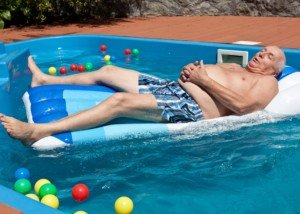





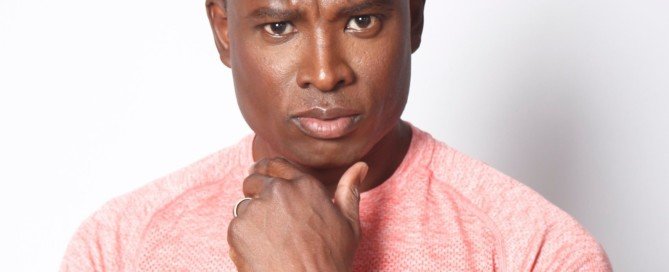



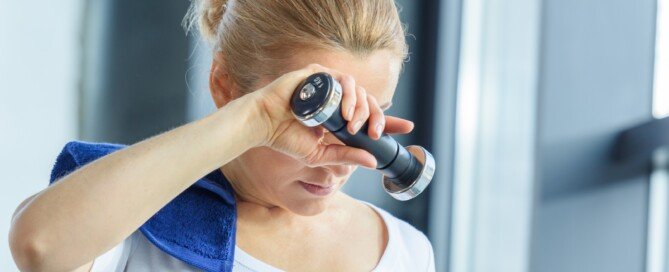
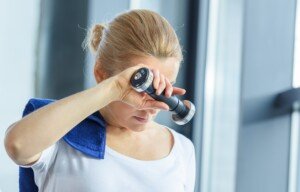

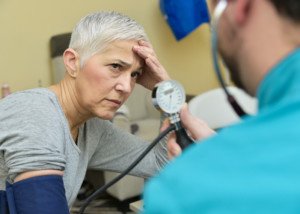
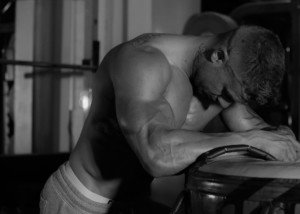

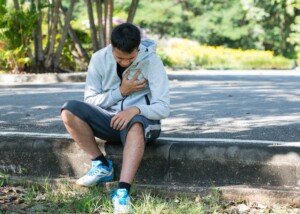
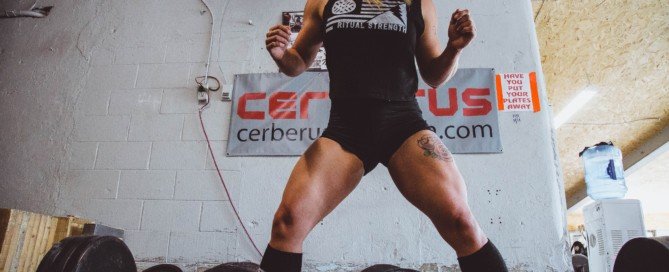
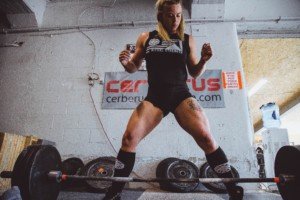




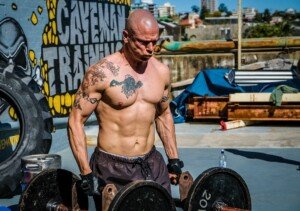

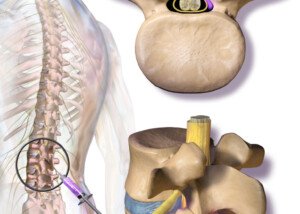
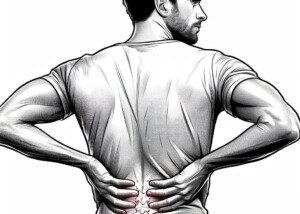
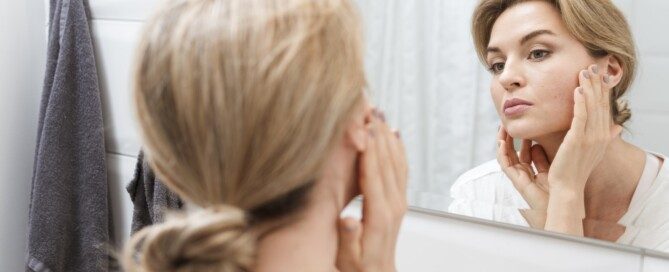
 Dr. de la Fuente Garcia
Dr. de la Fuente Garcia